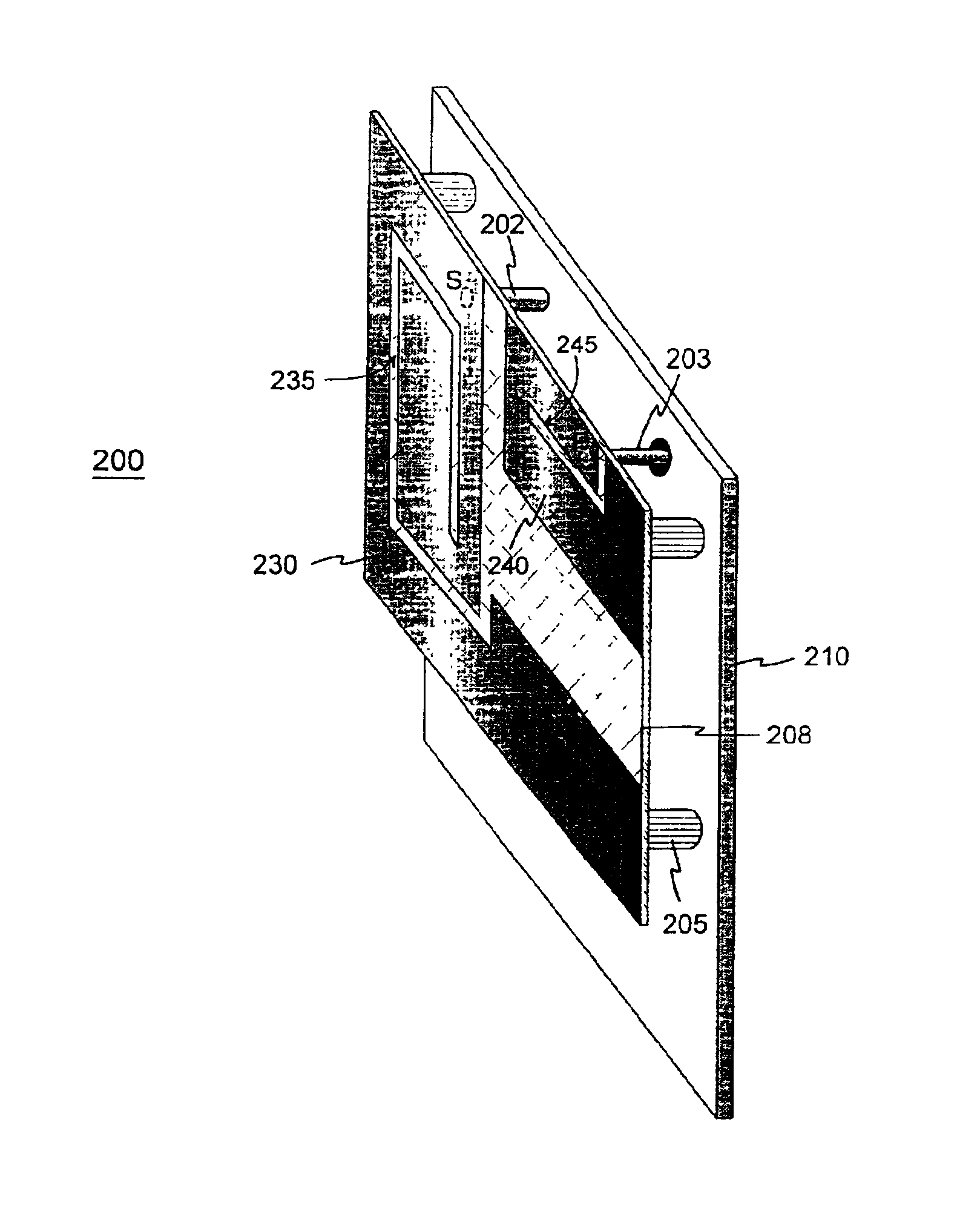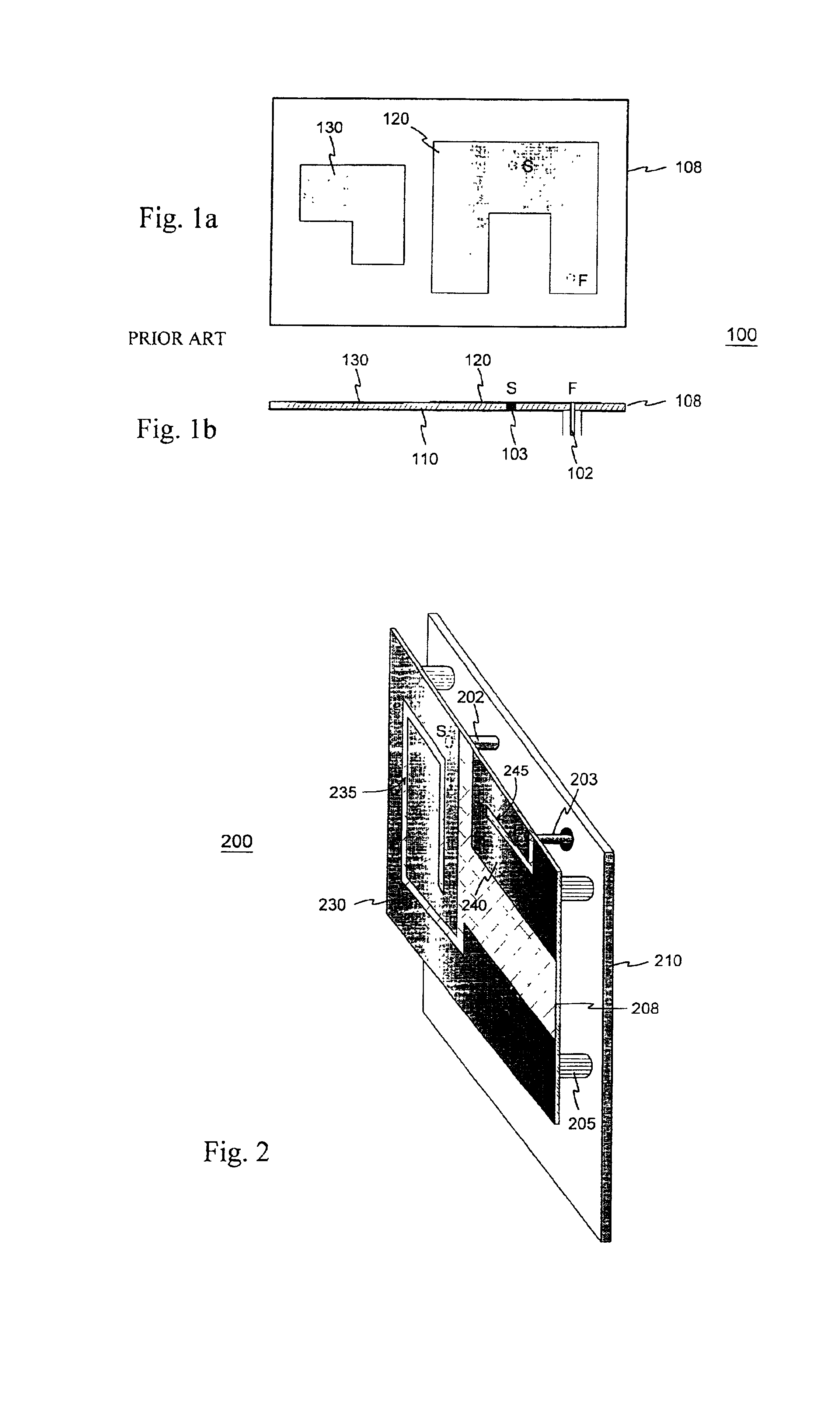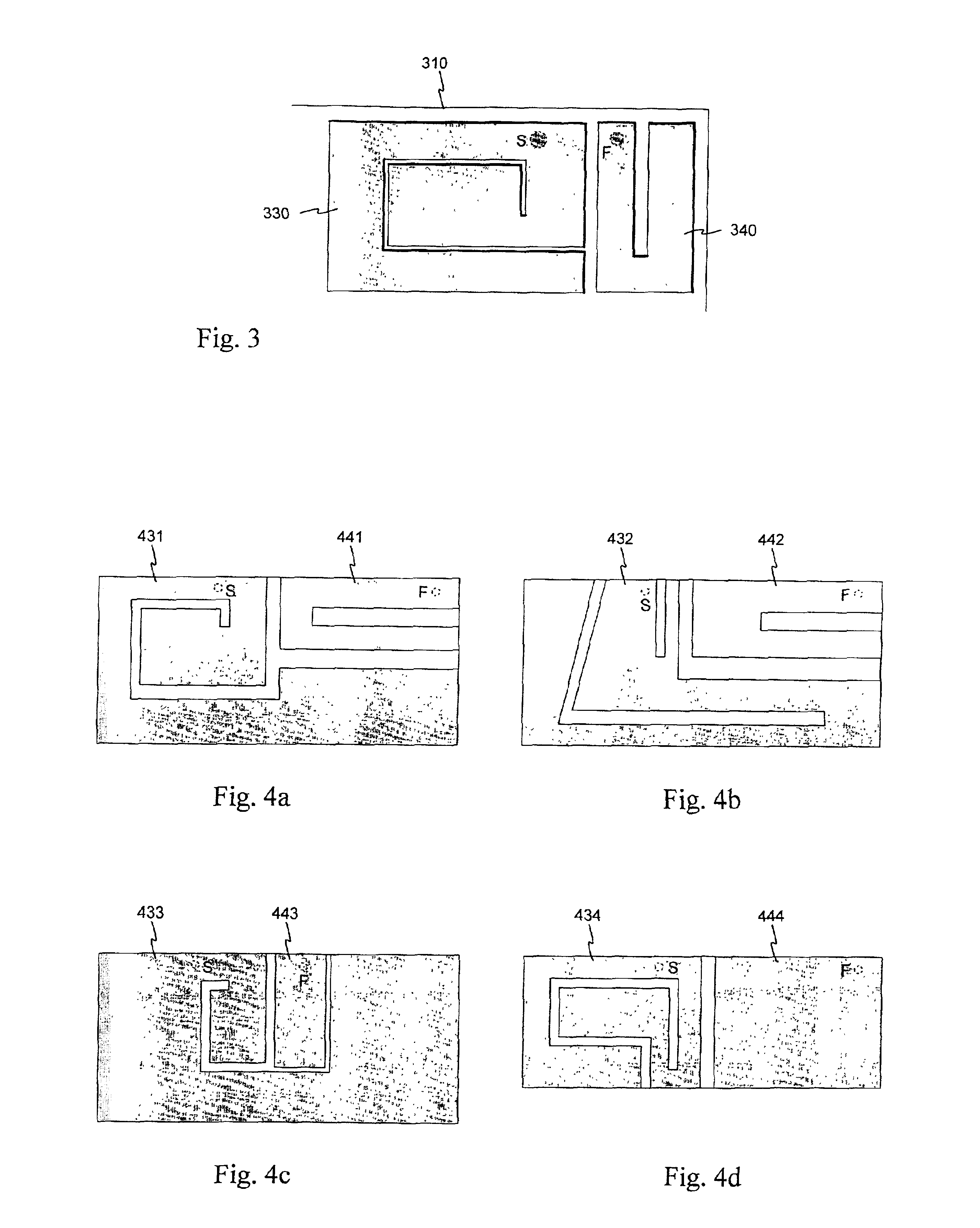Planar antenna structure
a technology of antenna structure and antenna, applied in the direction of simultaneous aerial operation, antenna details, antennas, etc., can solve the problems of insufficient bandwidth for modern communications devices, may have short circuit points, and the requirements of antennas have become more severe, and achieve wideband antennas, reliable dual resonance, and simple structure
- Summary
- Abstract
- Description
- Claims
- Application Information
AI Technical Summary
Benefits of technology
Problems solved by technology
Method used
Image
Examples
Embodiment Construction
[0017]FIG. 1 was already discussed in conjunction with the description of the prior art.
[0018]FIG. 2 shows an example of an antenna structure according to the invention. In this example the antenna 200 comprises a ground plane 210 and a parallely positioned dielectric plate 208, attached to the ground plane through insulating pieces such as 205. On the outer surface, as viewed from the ground plane, of the dielectric plate 208 there are two separate planar conductive regions: a parasitic element 230 and feed element 240. On the ground-plane-side surface of the dielectric plate 208 there are no conductive regions. The parasitic element is short-circuited at a point S to the ground plane through conductor 202. The radiating parasitic element 230, short-circuit conductor 202 and ground plane thus constitute the PIFA-part of the antenna. The feed conductor 203 of the whole antenna structure is in galvanic contact with the feed element 240 at a point F. The feed element has two functions...
PUM
 Login to View More
Login to View More Abstract
Description
Claims
Application Information
 Login to View More
Login to View More - R&D
- Intellectual Property
- Life Sciences
- Materials
- Tech Scout
- Unparalleled Data Quality
- Higher Quality Content
- 60% Fewer Hallucinations
Browse by: Latest US Patents, China's latest patents, Technical Efficacy Thesaurus, Application Domain, Technology Topic, Popular Technical Reports.
© 2025 PatSnap. All rights reserved.Legal|Privacy policy|Modern Slavery Act Transparency Statement|Sitemap|About US| Contact US: help@patsnap.com



